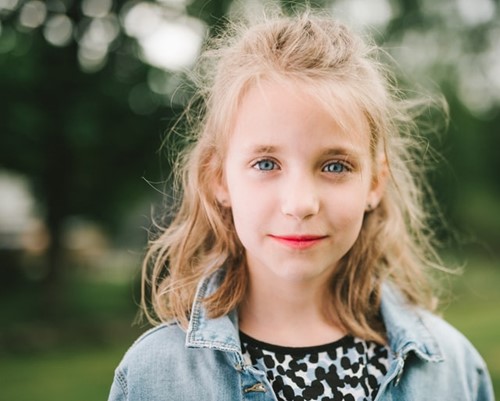Easy Ways To Care For Your Child’s Hair
If you’re a parent, you’ll know how frustrating wash time and hair combing can sometimes be. From getting water in their eyes to just not wanting to sit still, it can feel like it takes a battle to complete a simple task.

Kids have thinner hair than adults, meaning it’s more prone to tangles and breakage. Maintaining and managing their hair doesn’t have to be difficult though, here are some of the best tips to dealing with children’s hair!
Wash Days
Hair washing days are important for us all, kids and adults alike! Making sure your little one’s hair is in good condition is important for their health and overall well-being.
If your child is at the toddler age, it’s recommended that you wash their hair approximately three times a week, or when needed. It’s then suggested that when your child starts school you should wash it more regularly and especially after any swimming lessons to prevent chlorine from drying their hair out.
Always remember to brush any tangles or knots out before washing as these can become worse when wet!
When choosing an appropriate shampoo, make sure to look for ones formulated especially for children, these tend to be more gentle than adult ones helping their hair grow well. Also be sure to read reviews online before purchasing to make an informed decision. Massage a small amount of shampoo into their scalp when wet and rinse away with warm water. If you’re worried about getting shampoo in their eyes you can ask them to hold a clean flannel/cloth over them. You can also purchase a shampoo that doesn’t irritate eyes, just look for sensitive shampoos.
Drying Time
The best way to dry your child’s hair is to let it air dry naturally or to gently towel dry it, this can prevent any heat damage to their hair - this is especially important as their hair is thinner. If you do need to use a blow dryer, make sure to use the low-heat setting and keep the dryer at least 15cm away from their head.
Detangling And Choosing The Right Brush
Tangles and knots are unfortunately part of life, they’re a pain to get out but working out a good method to remove them is essential.
Make sure you squeeze any excess water out with a towel if you’re detangling wet hair. Comb the hair using a wide-toothed comb or a special detangling brush for the best results. If your child refuses to sit still or finds this process painful, try distracting them with a film or a book while brushing to make it more enjoyable. Always start by brushing the ends and work your way towards the scalp. The area by the nape of the neck tends to get most tangled, so it can be helpful to start here.
You can even purchase a detangling conditioner or spray to help make combing easy, these are common and found in most drugstores or online.
Most people own a standard plastic hairbrush, these can be good, but some advice against using them for every brush. Bristle brushes can be useful for children’s hair as these softer bristles help distribute natural oils throughout hair and can even remove dirt.
The rule of thumb for hair brushes is: closer bristles are good for fine hair and further bristles are better for thicker hair.
Helpful Hair Styles
Kids love to be active and play and if their hair is longer this will result in messy, knotty hair. Don’t worry though! Tying your kid’s hair up when they’re out and about can eliminate any unnecessary knots from playing, keeping their hair more manageable for wash times.
Using hair bands and bobbles is good, but frequent use can be tough on young hair. Hair is delicate, so using material-covered bands or soft scrunchies are better options. Never use rubber bands, these are prone to damaging hair and can even be painful to remove.
Regular Cuts
Regular haircuts are important for promoting healthy hair growth and also keep your child looking smart. A regular cutting pattern will keep any split ends at bay, this is important as removing brittle ends will prevent any further damage or larger splits.
A good haircut schedule will keep their hair strong as they grow!